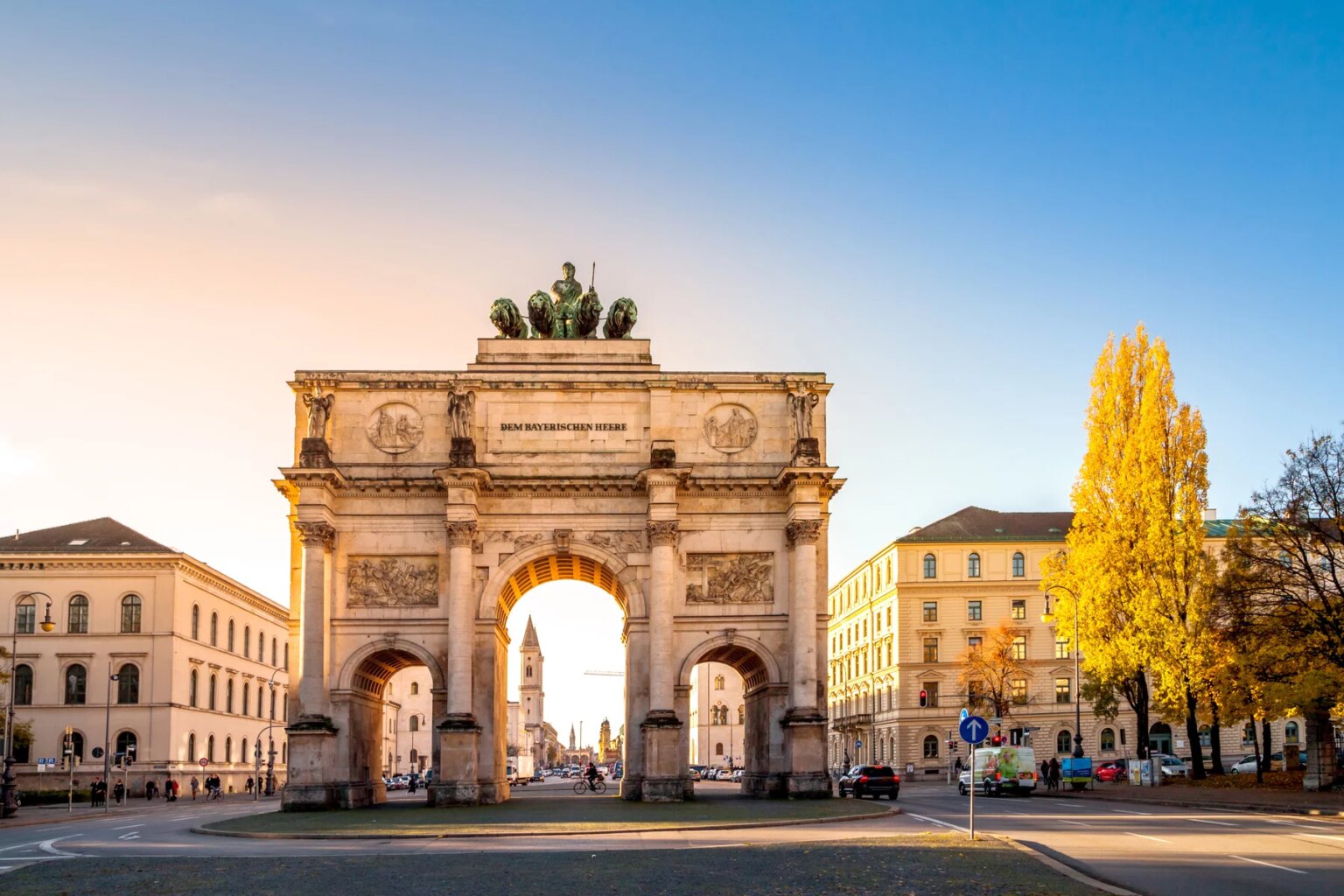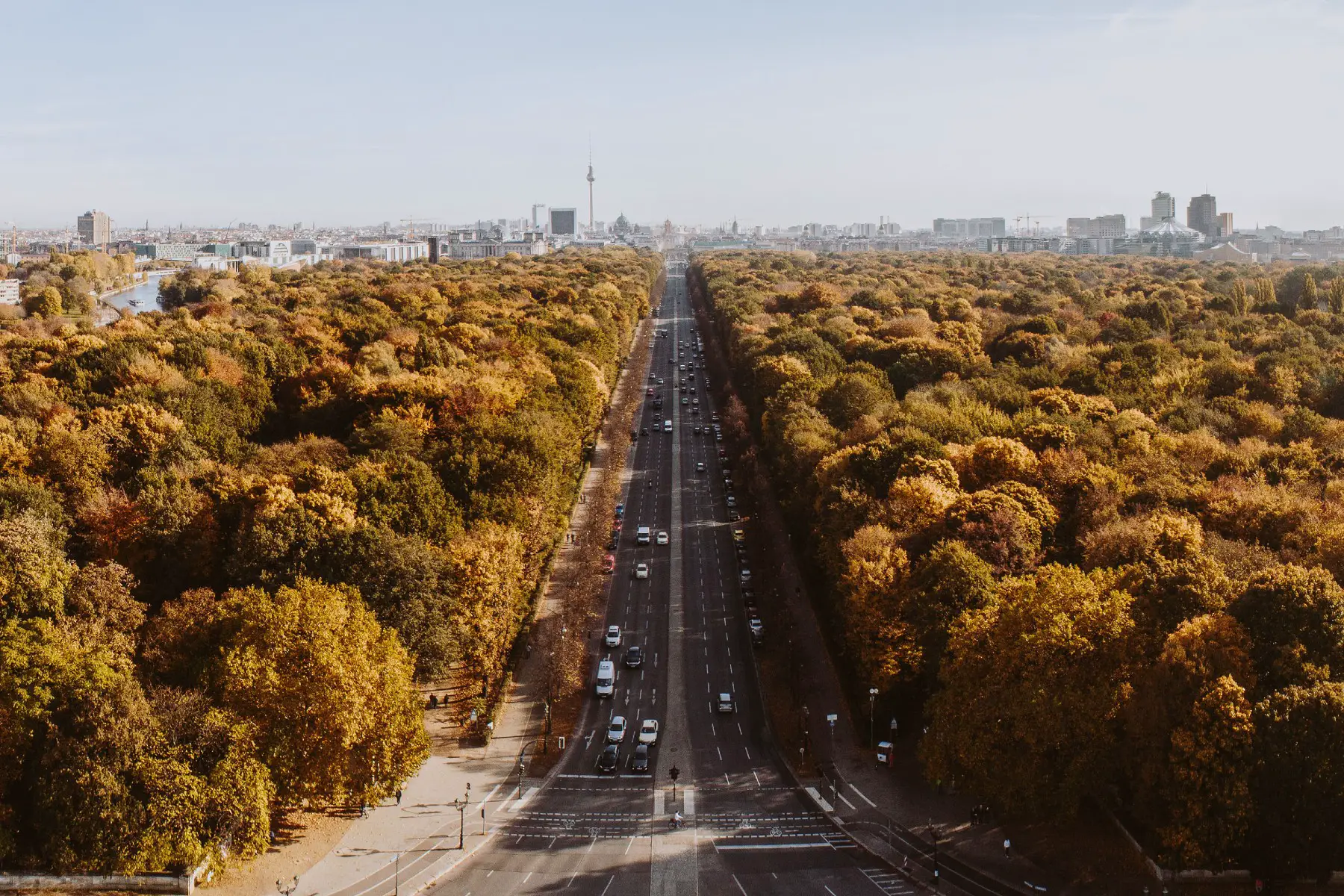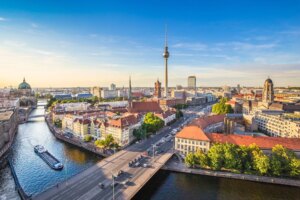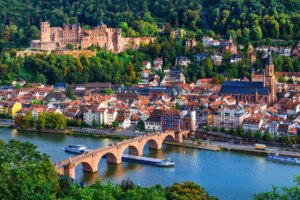Munich (München) is a renowned international destination for expats, offering its residents a high quality of life in a top German city. Whether you like historic architecture, an energetic social scene, or beautiful nature – this city truly has something for everyone.
Discover which of Munich’s many neighborhoods could be your new home by reading the following:
Bavarian International School (BIS)
Give your child the best start in life with Bavarian International School. With two campuses in and around Munich, this English-language school aims to inspire young, curious minds from Kindergarten to Grade 12 through its IB curriculum. BIS also offers many out-of-hours activities for personalities to flourish holistically.
Why move to Munich?
Nestled in the southern region of Germany, Munich is the capital of the state of Bavaria. While often associated with its world-famous Oktoberfest, the city is much more than beer and bratwurst; it is a beacon of German culture, history, and innovation.
With a population of around 1.5 million, München is a hub for expats, particularly those from the US and other European countries. The city is one of Europe’s most prosperous – especially in the sectors of automotive engineering, information technology, and finance. Its thriving tech scene is home to some of Germany’s most valuable startup unicorns, causing the city to be dubbed the “California of Europe”.

However, its innovative stature also proves to be a double-edged sword. Real estate prices are known to be painfully steep, even surpassing London UK’s famously sky-high housing market.
Despite this, the Monocle 2023 Quality of Life Index has ranked Munich as the third most livable city in the world. Crime rates are low, and there are plenty of green spaces where residents can get their fill.
Among its impressive landmarks are the Marienplatz with its iconic Neues Rathaus (New Town Hall), the Olympiaberg (Olympic Hill), and the Englischer Garten (English Garden), which is the largest inner-city park in the world. Plus, Munich’s relative closeness to the border with Austria means the city is a gateway to some of Europe’s most stunning scenery in the Alps.
From a social perspective, Bavaria’s state capital is generally inclusive and progressive. It hosts various LGBTQ+ events throughout the year, including Munich Pride. It has also designed key infrastructure, such as the public transit system, to be accessible to people with disabilities.
How to find housing in Munich
Since the Munich real estate market is competitive, it’s best to start your search as early as possible – months before you plan to move.
Just like most cities, your search for a place to live will most likely begin online. Some of the most popular online portals for renting and buying properties in Munich are:
- HousingAnywhere
- Immonet
- ImmoScout24
- Immowelt
- SOWON (Munich’s social housing platform)
- UniPlaces (for students)
- Wunderflats
However, to avoid falling prey to a housing scam, you might be better off sticking with a trusted real estate company. It’s also recommended that you join local Facebook groups to connect with others who may have tips and first-hand knowledge about relocating to the city.

Writer
Megan Janicke
Insider tip
Don’t forget to register your address with the German authorities within two weeks of moving to Munich.
Typical accommodation in Munich
Munich has a mix of traditional Bavarian homes alongside modern houses and highrises. A typical mid-range flat size is 50 to 100 square meters, though apartments in the city center tend to be smaller.

Outdoor spaces are generally more common in the suburbs or newer homes. These may include communal gardens, terraces, or even small private yards. That said, proximity to public parks like the expansive Munich Hofgarten (Royal Garden) compensates for the lack of private outdoor space in many city-center apartments.
What are the renting options in Munich?
The rental market in Munich consists of privately owned sublet properties and subsidized social housing options. Due to the high costs of buying property, renting (miete) is a more popular choice for expats looking to move to the city.
Although Munich is the most expensive city in Germany to rent in, the municipality is striving to make housing more affordable. For example, the Munich model (München Modell) offers affordable housing for low-to-middle-income households and families with children throughout the city. Renters with low incomes can also benefit from a housing subsidy (wohngeld).
Real estate moves fast in Munich, so it’s recommended to keep a folder with all the required documents for the rental application before you start your housing search.
How to rent on a budget in Munich
Districts in Munich with affordable housing include:
- Neuperlach
- Pasing-Obermenzing
- Ramersdorf-Perlach
- Freiham
A great way to save money on rent is by living together with a roommate. Flatshares (wohngemeinschaften) are usually cheaper than living alone. Moving into an unfurnished apartment can be less expensive than a furnished, short-term rental.
Students doing vocational training may be eligible for the state-sponsored Live + Learn housing program. This program allows them to move into affordable apartments in central and convenient locations for the duration of their training. The government’s Live and Learn website provides more information about the program and its requirements.

What if you want to buy a property in Munich?
For potential buyers in Munich, there’s both good news and bad news. After a decade-long house price boom, German real estate prices are in freefall (2024). The housing market is struggling as higher mortgage interest rates and rising inflation have increased affordability constraints.
If you’re employed, you should be able to get a mortgage with no additional requirements – regardless of your nationality.
That said, Germany is still one of the OECD countries with the highest house price-to-rent ratios. Housing is the most expensive in Munich, where you pay an average of €9,931 per square meter (mid-2023). A typical apartment costs around €800,000, while city houses go away for €1.8M.
Conversely, Berlin is one of the more affordable cities in Germany, with a square meter price of €4,802.
Munich’s districts and neighborhoods
Munich is divided into 25 administrative boroughs (stadtbezirke), each with its own unique districts, character, and charm.
When searching for a place to live, your best bet is to identify the area that best suits your budget and lifestyle. Wherever you may end up, thanks to a robust and efficient public transportation system, you can get around the city quickly. Better still, bike-friendly Munich has an extensive network of well-marked bicycle lanes that allow you to reduce your carbon footprint even further.
Keep reading for a closer look at some of Munich’s top neighborhoods for expats.

Bogenhausen
For upscale residences and a serene atmosphere, look no further than Bogenhausen. If you survive the sticker shock of the real estate prices, you will find much to love in this gorgeous neighborhood.
Located northeast of the city center, Bogenhausen features leafy, quiet streets with grand villas and luxury apartments. The village-like area is considered one of the most family-friendly places in Munich, and many expats, especially those from English-speaking countries, choose to make this their home.
The district has several public and private schools that attract families with children. Residents also like the proximity to high-quality healthcare, with some of the city’s top hospitals and health facilities nearby.
Since the neighborhood is near the Isar River and Munich’s public parks, you have plenty of opportunities for scenic walks and cycling. Sports fans will also enjoy the Prinzregentenfreibad, a year-round outdoor pool where you can swim during the summer months and ice skate in the winter.
For cultural outings, visit the adjacent Prinzregentenplatz, with its impressive art nouveau buildings and the esteemed Prinzregententheater (Prince Regent’s Theatre).
Why you should move to Bogenhausen
Bogenhausen is far removed from the noisy nightlife and touristy spots but close enough to the city center for convenience. The neighborhood also has plenty of shops and restaurants that cater to high-end tastes and budgets.
If you have a car, parking is easier to find here than in more central areas. However, you should be aware that ticket prices might be steeper.
Freiham
Expats looking for affordable housing in Munich should pay close attention to the up-and-coming Freiham district in the Aubing-Lochhausen-Langwied borough.
Located on the west outskirts of Munich, adjacent to the suburbs of Aubing and Neuaubing, Freiham is being developed to provide low-cost housing for approximately 20,000 residents by 2040. The urban district aims to provide a high standard of living with fast and comfortable transport connections between residential, working, and recreational areas.

Freiham is well-integrated into Munich’s transport network, with two S-Bahn train stations, several buses, and autobahns. The design includes a mix of housing types, including spacious apartments and pocket-sized houses. There are also two district centers, shared meeting points for residents, beer gardens, and expansive green spaces.
Families with children will like being near a multitude of kindergartens, daycares, and schools. Plus, with the close proximity to farm life, there are plenty of options for fresh produce.
Why you should move to Freiham
Calm and quiet, Freiham has a suburban feel and is less crowded than other areas close to the city center. With two residential and cultural centers for refugees, asylum seekers, and other German citizens, the neighborhood is a melting pot of tastes and cultures that many world nomads will enjoy.
Gärtnerplatz and Glockenbach
Situated just south of the city center, Gärtnerplatzvertiel and Glockenbachvertiel are two trendy neighborhoods in the Ludwigsvorstadt-Isarvorstadt district. Together they form Munich’s vibrant LGBTQ+ district.
Their independent labels, hip bars and cafes, energetic nightlife venues, and alternative social scene attract the young and the young at heart. Freelancers and creatives often choose it for its youthful vibe, numerous co-working spaces, and networking opportunities.
Glockenbach’s location between the Isar River and the Sendlinger Tor (remnants of the historical city wall) has given rise to many parks and green spaces. Meanwhile, the opera house in Gärtnerplatz (Staatstheater am Gärtnerplatz) is one of Munich’s top spots for operettas and musicals. The area also has several boutique stores, art galleries, and open-air markets that offer diverse shopping experiences.
In terms of practical amenities – the neighborhood has many local healthcare facilities, and you can easily access larger hospitals located in other parts of the city. Schools are a mix of public and private, and some offer international curriculums. Residents can get to the city center within just minutes by U-Bahn or bike.

Why you should move to Gärtnerplatz or the Glockenbachvertiel
Expats living in Gärtnerplatz or Glockenbach have plenty of ways to be active, socialize, and enjoy life. Foodies can delight in the Viktualienmarkt, with more than 100 food stalls and Munich’s most central beer garden.
Haidhausen
Often referred to as the “French Quarter,” Haidhausen is an old village that’s now one of Munich’s most charming and popular residential neighborhoods. It’s located on the eastern bank of the Isar River in the Au-Haidhausen borough.
Haidhausen is a peaceful, historic area with narrow streets and small shops, tree-lined courtyards, and classic architecture. At its center, you’ll find Wiener Platz, the main social meeting point of the neighborhood, where you can enjoy the local market and cozy cafes. Classical music enthusiasts will love being close to the Gasteig Cultural Center (Kulturzentrum Gasteig), home of the Munich Philharmonic Orchestra.
Haidhausen has an active international community that attracts families and young professionals alike. You’ll often find expat meetups or international events happening in local venues. Residents enjoy the diversity of local shops and markets, many of which cater to sustainable lifestyles.
The neighborhood also has several schools and healthcare facilities, including the top-notch University Hospital Rechts der Isar, which provides comprehensive healthcare services.
Why you should move to Haidhausen
Haidhausen is close to the city center, making it a scenic and conveniently located place to live.
Maxvorstadt
North of the city center is Maxvorstadt, Munich’s university district, where bookshops and indie boutiques share the street with student pubs and trendy restaurants.
When it comes to cultural attractions, Maxvorstadt does not disappoint. The district is home to both small galleries and world-class art museums, including the Pinakothek der Moderne (Pinakothek of Modern Art), which shows contemporary masterpieces spanning centuries.

The dining scene is also dynamic and diverse, with a strong cafe culture and restaurants specializing in everything from traditional Bavarian to international cuisine.
Like most areas of Munich, you’ll be able to commute efficiently using public transportation and bike lanes. The city center is approximately 15 minutes away by bus or metro. While less green than some other neighborhoods, Maxvorstadt has several small parks with children’s playgrounds and open spaces. Green spaces include Königsplatz, which hosts summer concerts and outdoor movies.
Why you should move to Maxvorstadt
Maxvorstadt has a diverse international student population, and it can be a great place for expats to integrate and build a community network.
Pasing-Obermenzing
If Perlach doesn’t work out, you can always try to find green living options in family-friendly Pasing-Obermenzing. This neighborhood west of Munich is home to many expat families thanks to its relaxed, suburban feel, and access to quality education.
Originally two independent communities, Pasing and Obermenzing combined in 1938 and were incorporated into the municipality of Munich. Today, the district attracts new parents and elderly residents who are looking for an affordable area within 20 minutes of the city center.
Pasing-Obermenzing is lush with green parks and open spaces, such as the Pasinger Stadtpark and the idyllic Blutenburg castle grounds. Nightlife is more subdued than in central areas, but you can still find cozy bars and cafes where you can socialize. Foodies will also appreciate the wide range of restaurants where they can enjoy traditional Bavarian cuisine.
For shopping and retail, the Pasing Arcaden shopping mall is the go-to destination for international brands and exclusive retailers. Local healthcare facilities are comprehensive, and the Klinikum Großhadern hospital is within a short driving distance.
While parking is generally easier to find and less expensive than in more central locations, you don’t really need a car in Pasing-Obermenzing; getting to the city center is quick and easy with the S-Bahn.

Why you should move to Pasing-Obermenzing
Pasing-Obermenzing offers expats the perfect balance of a slower life with green spaces and relative closeness to the urban bustle of Munich. It is the ideal area to start a family and put down long-term roots.
Schwabing
Located in the northern part of the city, Schwabing was once Munich’s Bohemian quarter. Today, it is one of the richest and priciest residential neighborhoods in the city, known for its Art Nouveau architecture.
Interestingly – and in stark contrast with the multimillion-euro homes – Schwabing is home to young professionals and a large student community from two of Munich’s universities.
Of course, this popular neighborhood is not short on enticing amenities. While the bordering English Garden may be the star attraction, Schwabing is also full of boutique stores, cafes, restaurants, and nightlife spots. Notable art galleries, theaters like the Schwabinger Schaustelle, and the famous Leopoldstraße add to the cultural appeal.
This is not to say that the area isn’t family-friendly. With plenty of parks, playgrounds, and kid-approved amenities, many families choose to settle down in the neighborhood. Expat parents will also appreciate the short distance to Munich’s international schools (including the Bavarian International School), and academic hospital.
Why should you move to Schwabing?
Schwabing residents enjoy the balance of a lively and eclectic neighborhood that’s not overwhelmingly busy.
Other neighborhoods to check out
While this article delves into only seven of Munich’s neighborhoods, there are plenty of other boroughs to choose from.

Munich’s other districts include:
- Allach-Untermenzing – while Allach has lots of businesses and industry, Untermenzing features small pretty houses, each with its own garden, beer gardens, and coffee bars
- Altstadt-Lehel – Old Town, or the historic city center of Munich, is the main shopping area and has many historic attractions
- Berg am Laim – a former factory site with more than 20 clubs, halls, and bars, Berg am Laim residents will find a home in apartment houses and industrial estates
- Feldmoching-Hasenbergl – The district is made of the historical farming village Feldmoching and the large housing estate Hasenbergl. Feldmoching-Hasenbergl is where most farms in Munich are located, though housing options also include terrace houses and apartment buildings. Residents can enjoy the popular recreation areas of Feldmochinger See, Fasanerie See, and Lerchenauer See.
- Hadern – once a farmer’s village, Hadern has loads of old farmhouses and is home to the Campus Großhadern of the University Hospital of Munich
- Laim – Laim is a popular residential area located close to the Nymphenburg Palace (Schloss Nymphenburg) and the beer garden Hirschgarten
- Milbertshofen-Am Hart – an underrated residential neighborhood, Milbertshofen-Am Hart is best known as the location of the Olympic Park, the BMW Museum, and Petuelpark
- Moosach – Moosach is one of the oldest settlements in Germany, dating back to the Stone Age. While many families live in the district, several main roads cross this borough.
- Neuhausen-Nymphenburg – this former recreation area close to Munich offers many green and open spaces. Neuhausen-Nymphenburg has a relaxed atmosphere and is home to the Nymphenburg Palace, the botanical garden, and the Hirschgarten.
- Obergiesing – Obergiesing is part of Munich’s urban boundary close to the forest Perlacher Forst. The borough has mostly detached houses at reasonable prices.
- Ramersdorf-Perlach – while still dealing with a legacy reputation, Ramersdorf-Perlach is one of Munich’s more affordable districts with plans to create more sustainable living options in the future. It’s becoming increasingly popular among expats, although it has a smaller international community than city areas like Schwabing or Maxvorstadt.
- Schwanthalerhöhe – Munich’s most densely populated area is Schwanthalerhöhe. Locals call it Westend or Multi-Kulti-Viertel, as residents come from all over the world live here.
- Sendling – a popular hotspot among Munich citizens, Sendling is a place that simply cannot be pigeonholed. Housing options include old farmhouses and modern apartments.
- Sendling-Westpark – while not a particularly lively area, Sendling is known for its beautiful architecture
- Thalkirchen-Obersendling-Forstenried-Fürstenried-Solln – a district with many contrasts, Thalkirchen-Obersendling-Forstenried-Fürstenried-Solln offers housing estates, multi-story buildings, and elegant village houses
- Trudering-Riem – whereas family-friendly Trudering is a tranquil part of Munich, Riem is much livelier with apartment houses and access to the Munich horse race track (Galopprennbahn)
- Untergiesing-Harlaching – known for its beautiful parks and green spaces, Untergiesing-Harlaching is a charming residential area with large apartment buildings and some single-family houses
Are there neighborhoods you should avoid in Munich?
Bavaria has the lowest crime rates in Germany, and its capital is one of the safest cities in the country. While Munich generally doesn’t have areas you should avoid, you should exercise caution and common sense when walking alone at night or in busy areas where pickpocketing might occur.

The most registered crimes in 2022 occurred in the districts of:
- Ludwigsvorstadt
- Schwabing-Freimann
- Altstadt-Lehei
- Maxvorstadt
- Ramersdorf-Perlach
Munich is also considered a safe city in regard to air quality and pollution. The German government has implemented strict regulations to mitigate the industry’s impact on air quality and the local environment. However, you may want to avoid buying a home in certain areas near airports and highways.
Tips on choosing a neighborhood in Munich
Whether you’re renting on a budget or buying a million-euro home, you’ll want to be sure you land in the spot that suits you best. Here are a few tips to keep in mind when looking for a place in Munich:
- Safety – how does the neighborhood feel during the day and night?
- Local amenities – how easy is it to access what you need and enjoy? Do the neighborhood schools meet your requirements?
- Transportation – can you get around using your chosen mode of transportation? How long will it take you to commute to work?
- Lifestyle compatibility – are you sporty, social, or seeking peace and quiet? Find out how the neighborhood will suit your personality.
You can also get great advice (and create new friendships) from different expat groups in Munich. For example:
Useful resources
- City of Munich – official online portal with information in several languages
- Simply Munich – guide to local attractions and events in English, including top things to do in Munich with kids
- Geheimtipp München – guide to local events, neighborhoods, and places in German










